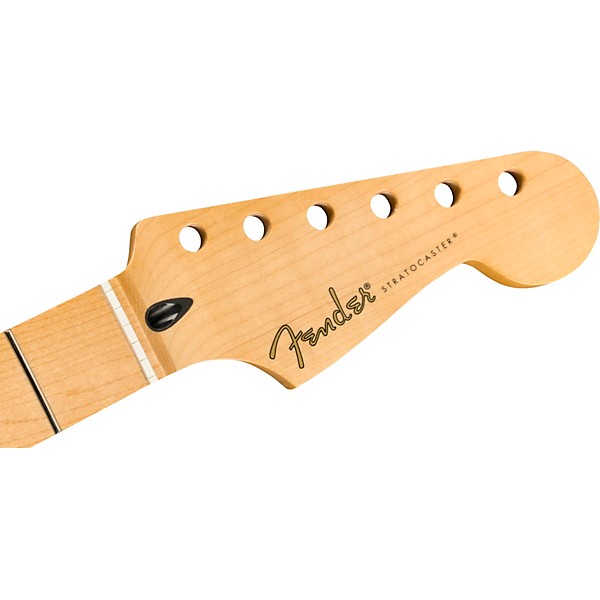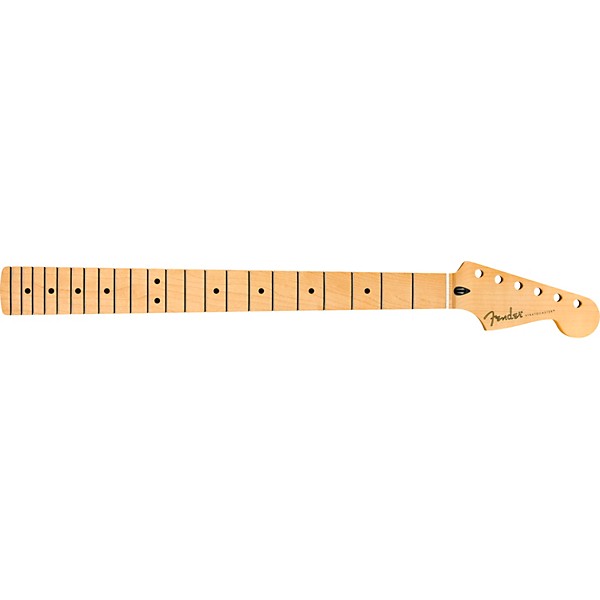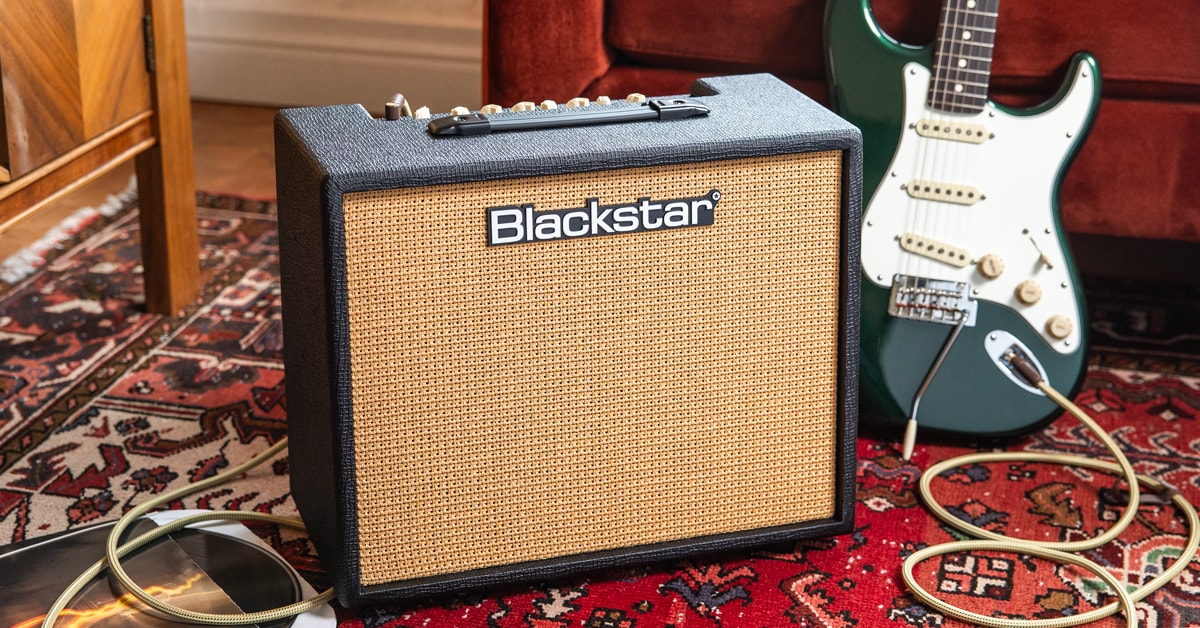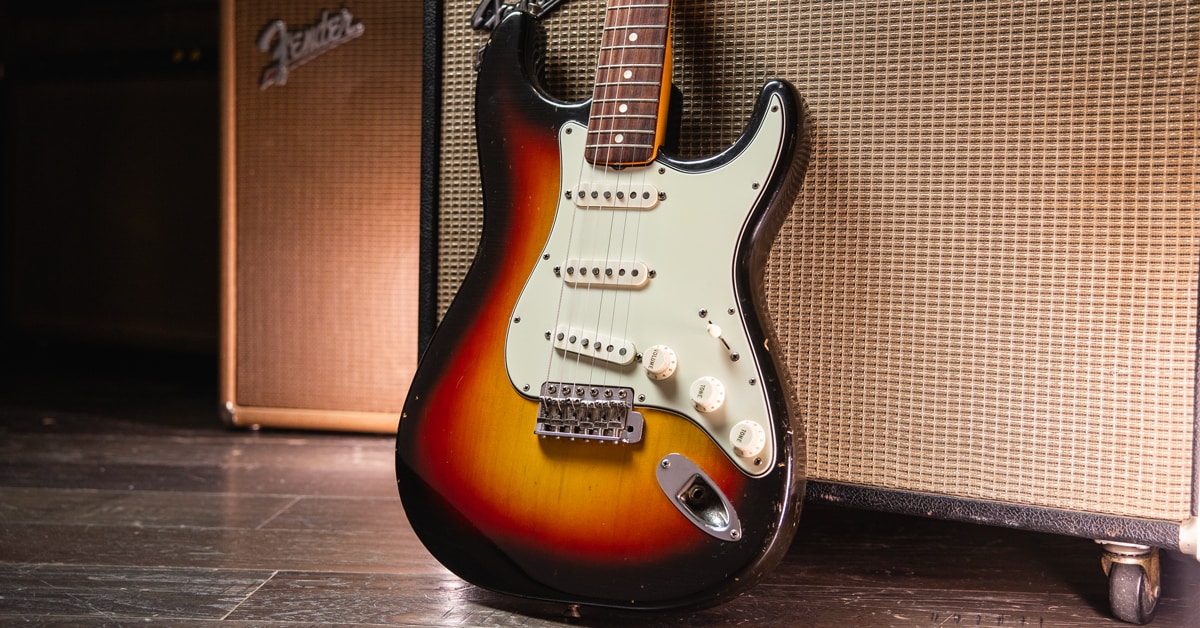Fender Baritone Stratocaster Neck, 22 Medium Jumbo Frets

 Description
Description
The nut is pre-slotted with “pilot” string location grooves to make spacing a breeze when performing the final string slot filing, and a satin finish on the back offers smooth playability.
This replacement neck is for a Fender or Squier by Fender guitar.
Because Fender genuine replacement necks have not been mounted to guitar bodies, nut slots must be cut by qualified personnel. Other installation processes may be required, such as fret work, fitting the neck to the neck pocket, and other instrument setup procedures.
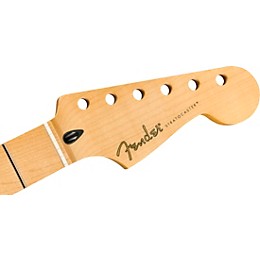
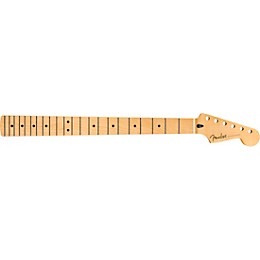
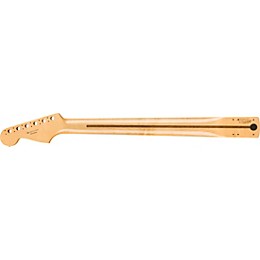

WARNING: Cancer and Reproductive Harm www.P65Warnings.ca.gov.
 Specs
Specs
- Neck Material: Maple
- Neck Shape: “C” Shape
- Neck Finish: Gloss Urethane
- Fingerboard Material: Available with a Maple or Pau Ferro Fingerboard
- Radius: 9.5” (241 mm)
- Scale Length: 27” (686 mm)
- Number of Frets: 22
- Fret Size: Medium Jumbo
- Position Inlays: Black Dot on Maple and White Dot on Pau Ferro
- Nut Material: Plastic
- Nut Width: 1.650” (42 mm)
- Truss Rod: Standard
- Truss Rod Nut: 3/16” Hex at Headstock
- Tuner Mounting: Dual Guide Pin
- Headstock Thickness: .540” (13.71 mm)
- Neck Thickness: 1st Fret - .830” (21.08 mm), 12th Fret - .900” (22.86 mm)
- Neck Mounting: 4-Bolt
Featured Articles
 Reviews
Reviews
5
1 Reviews
100%
of respondents would recommend this to a friend
- Experienced1
Reviewed by 1 customers
Baritone Mustang
submitted2 years ago
byWern
fromOn the road
I installed mine on a Squire Mustang body. I originally purchased a Warmoth neck. Although the Warmoth neck was of good quality, the longer scale length was uncomfortable, and I felt a strain on my carpel tunnel. This slightly shorter 27" (measured) Fender neck feels much more familiar. The Mustang has a different scale length than a Strat, meaning that the bridge will need moved. THIS WONT WORK ON A MUSTANG WITH A TREMOLO BRIDGE. The flat slab body on the Mustang makes it easy to relocate the hardtail bridge 3/4" down. Be careful with the factory bridge screws - they're soft and it's easy to round out the head (that's why I'm only using four of the five). There will be 2 exposed screw holes on the body, and the bridge just barely covers the ground wire after it's moved.. Once the bridge is relocated, a standard (non-baritone) Strat neck could be installed as well. The plastic nut needs lots of work before use. It's pre-slotted, but these are only a reference to where the strings should go. The slots aren't deep enough to hold the strings in place. The nut was a bit tough to remove, requiring a few firm taps with a block of wood. I'm not sure why they would glue in a nut that needs finish work. The nut is also very high. I happen to have a very expensive set of Stew-Mac nut files, but most would be better served getting it fitted by a professional. After I deepened the string slots, I laid a piece of sand paper over the fretboard (to maintain the curve) and slowly removed quite a bit of material off of the bottom of the nut. The nut work alone took me about an hour with the right tools. It's a disappointing amount of time spent for a cheap plastic nut. My neck came with a very nice finish, and looks great on the guitar. The frets aren't "leveled", but they're factory installed, and very useable out of the box. I wouldn't go to the trouble of leveling them, even if I had all the tools. It's a very nice neck. Playability is great. I achieved a very low action for a baritone. The neck is thicker than I was expecting, and it's somewhere between my normal Fender necks, and an acoustic neck. I wouldn't call it a boatneck, but it's definitely thicker than most electric guitars. Installing strings produced more relief than expected, especially given the thickness of the neck. Adjusting the truss rod cleaned everything up nicely. Overall, it was more work than anticipated, but the results were better than anticipated. I'm happy with my purchase. I tune between C standard and Drop A with Earnie Ball "Not Even Slinky' 12-56 strings. Relocating the bridge softens the attack of the bridge pickup, but the heavier strings hold their own. I love the fact that this unassuming little Mustang can make some pretty mean noise now.
- Previous
- 1
- Next
 Q&A
Q&A
Have a question about this product? Our expert Gear Advisers have the answers.
submitted2 years ago
asked byPatrick
fromPhila, pa
Would this fit a Squier affinity Stratocaster? I know the affinity series has 'thinner bodies' - Would this be a concern?
No, the neck pocket has different specs.

